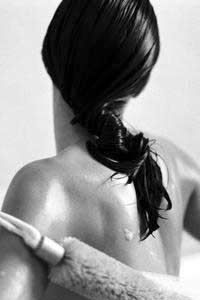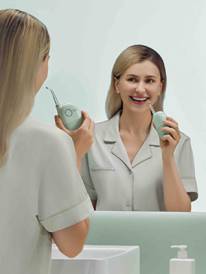Wave of the future

A new awareness of chemical strengtheners and natural alternatives By Diana Dudas
Although relaxing is a huge part of the black hair care industries income, sales from relaxers, last year were down more than 5%. People are opting to go au naturel and there is now a definite trend towards natural hair. Later on we will look at non-chemical options (afro is definitely back); But for those who prefer the option of sleek shiny straight hair, lets answer some of your concerns on your choice of relaxers and how they will affect your hair.
Hairs chemical transformation:
One of your first concerns will be the change of your hairs pH level. Hair in a healthy state should have a pH of between 4.5 - 5.5. Hairs natural oil, sebum, has a pH of 5. On the pH scale of between 1 - 14, 1 being the most acid and 14 being the most alkaline relaxers have a pH of between 8.4 and 14, thus changing your hairs naturally slightly acid state to alkaline. This will cause the hair to feel, dry coarse and in extreme cases you may experience hair breakage. It is therefore imperative to take good care of your newly relaxed hair by the use of pH balanced, treatment shampoos and conditioners.
Once the straightening solution has been applied to the hair, it will penetrate into the cortex (middle layer of hair), where it will react with the di -sulfide bonds, also known as the cysteine bonds. These bonds join together the protein chains, which are responsible for the structural stability and strength of the hair. This reaction will cause the protein chains to be broken and allow the hair to soften and take on a new form. Once this has occurred the hair is rinsed free of the solution so as not to allow any further softening to take place. The neutralizing process is then needed to repair the broken protein chains allowing the hair to be fixed into its new straight form. Chemical reactions can still occur up until 48 hours after your chemical service, so it is wise to wait at least that long before shampooing your hair.
Lye or no-lye:There are basically three types of hair relaxers. They are sodium hydroxide, guanidine hydroxide and ammonium thioglycolate:
Sodium hydroxide is the strongest of relaxers and is often called the lye relaxer. It is a very harsh, caustic chemical, and should only be used on coarse, extremely curly hair. The pH level is between 10 - 14 which means it has the most potentially harmful relaxer. And if not used with proper care can cause soreness of the scalp and dry, brittle hair.
No-lye relaxers are either Guanidine hydroxide (a combination of calcium hydroxide cream with guanidine carbonate), OR Ammonium thioglycolate. These have a pH of between 9 - 9.5, and are considered to be less damaging than the sodium hydroxide or lye relaxers. However it is still vital to give your hair the same TLC that you would give your hair with a sodium hydroxide relaxer.
New Ideas:
A recent breakthrough in hair straightening is known as the thermal ionic or bio ionic system. Using an ammonium thioglycolate substance, with the aid of a flat iron maintained at 170 - 230C, this process promises to transform your hair into permanently "pin-straight " hair, that will be soft, shiny and frizz-free.
For this service your hair needs to be at least four inches long. You will have to completely grow out your relaxer. The service takes about three hours for short hair and 4 -5 hours for longer hair. Because of the time involved it is obviously a costly service. However the upside is that it only needs to be done every six months.
As with all other relaxers do not wash your hair for at least 48 hours. And use products that are pH balanced. Also with this particular service, it is not advised that you bleach or hi lite your hair at all afterwards.
Precautions:
It is advisable when contemplating getting a chemical relaxer that you go to a hair stylist that is well respected in has plenty of experience. On your first visit to them, they should allow extra time to consult with you, check the porosity, elasticity and texture of your hair. Your scalp should also be checked for abrasions. This will allow them to determine the best type of relaxer for you, after which time a strand test should be done, to confirm their decision. During this time, records should be taken for future reference, and suggestions on after treatment hair care should be given. You should also be informed of how often you would need to return to the salon, so as to maintain your relaxed hair.
Non Chemical Relaxers:
An exciting new approach to retexturizing hair are the non-chemical temporary strengtheners also known as a smoothing glaze. This innovative type of styling lotion allows you to choose when you want to go straight or stay curly, by temporarily relaxing curls. They are designed to straighten, reduce frizz and protect hair from heat. Look for natural ingredients such as Matricaria and wheat proteins. These lotions are normally humidity resistant also. For those who prefer the natural approach this is a great way to go:
Au Natural:
With the increase in demand for natural alternatives to the 6 weekly regime of hair relaxing, there is obviously an increase of natural hair care experts. Offering new services in the maintenance of natural hair styles, such as the afro, , two strand twists, coils, braiding and locs.
As part of your natural heritage you may have learnt these techniques already. If not natural hair care experts are always willing to pass on their knowledge, of maintaining your look. Or you could maintain your natural look my a monthly visit to your salon.
www.razzamatazz.net
Wave of the future:
Australian representation for Bio Ionic Ion:
Synergy Hair - (02) 9360 7739
MORE



